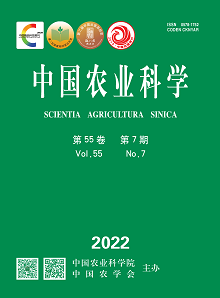【Objective】 The lettuce yield and nutritional quality planted in high-temperature seasons are not good. Nitrogen is the most closely related nutrient element to lettuce yield. In this study, the regulation mechanism of exogenous spermidine (Spd) on nitrogen metabolism of lettuce under high-temperature stress was studied, and the changes of amino acid nutritional quality were observed, so as to provide some protective measures to reduce the harm of high temperature on lettuce. 【Method】 The test material was leaf lettuce Beisansheng 3. The test treatments were set as normal temperature (day/night: 22℃/17℃) control (CK), high-temperature stress (day/night: 35℃/30℃) treatment (H), and high temperature spraying Spd treatment (HS). The changes of lettuce morphology were observed, and the changes of the lettuce root ion flow rate, nitrogen compounds contents (total nitrogen, ammonia nitrogen, and nitrate nitrogen), and the activities of key enzymes in nitrogen metabolism as well as their relative expression levels were analyzed. In addition, the effects of the CK, H, and HS treatments on the lettuce leaf free amino acids content were studied. 【Result】 Compared with the CK, the lettuce growth of the H treatment was inhibited. Compared with the H treatment, the HS treatment increased total fresh weight, total dry weight, leaf length, leaf width, root length, root volume, and root surface area of lettuce by 24.00%, 24.62%, 14.97%, 11.83%, 23.24%, 29.47%, and 36.98%, respectively. The changes in the total nitrogen content of lettuce treated by CK, H, and HS were consistent with the growing trend of lettuce. The net absorption amount of NO3- in lettuce roots treated with CK, H and HS were much smaller than that of NH4+, indicating that lettuce roots mainly absorbed NH4+. The H treatment resulted in the outflow of NO3- from roots, while the HS treatment promoted the influx of NO3- from roots. The accumulation of ammonia nitrogen content in leaves under the HS treatment was effectively inhibited. Meanwhile, the activities of nitrate reductase (NR), glutamine synthase (GS), glutamate synthase (GOGAT), and glutamate dehydrogenase (GDH) under the HS treatment were increased and the relative gene expression levels of LsNR, LsGS, LsGOGAT1, and LsGDH in leaves and roots were up-regulated. Compared with the CK treatment, the H treatment reduced the total free amino acid (TAA) content (P<0.05); the HS treatment alleviated the reduction in TAA content caused by high temperature. The changes of umami amino acids (UAA), sweet amino acids (SAA), and bitter amino acids (BAA) among the CK, H, and HS treatment were consistent with those of TAA, while aromatic amino acids (AAA) were the opposite. The changes of aspartic acid (Asp), threonine (Thr), glutamic acid (Glu), glycine (Gly), valine (Val), lysine (Lys), histidine (His), arginine (Arg), and proline (Pro) among the CK, H, and HS treatment were consistent with those of TAA. Among the free amino acids tested, Arg had the largest coefficient of variation. 【Conclusion】Spraying Spd treatment inhibited the decrease of lettuce biomass accumulation under high temperature. For spraying Spd treatment, the nitrogen metabolism disorders under high-temperature stress was alleviated, and the leaf total free amino acid content, flavor amino acids of umami amino acids, sweet amino acids, and bitter amino acids were increased, while the high-temperature resistant capacity of lettuce was effectively enhanced and the nutritional quality of lettuce was improved.









